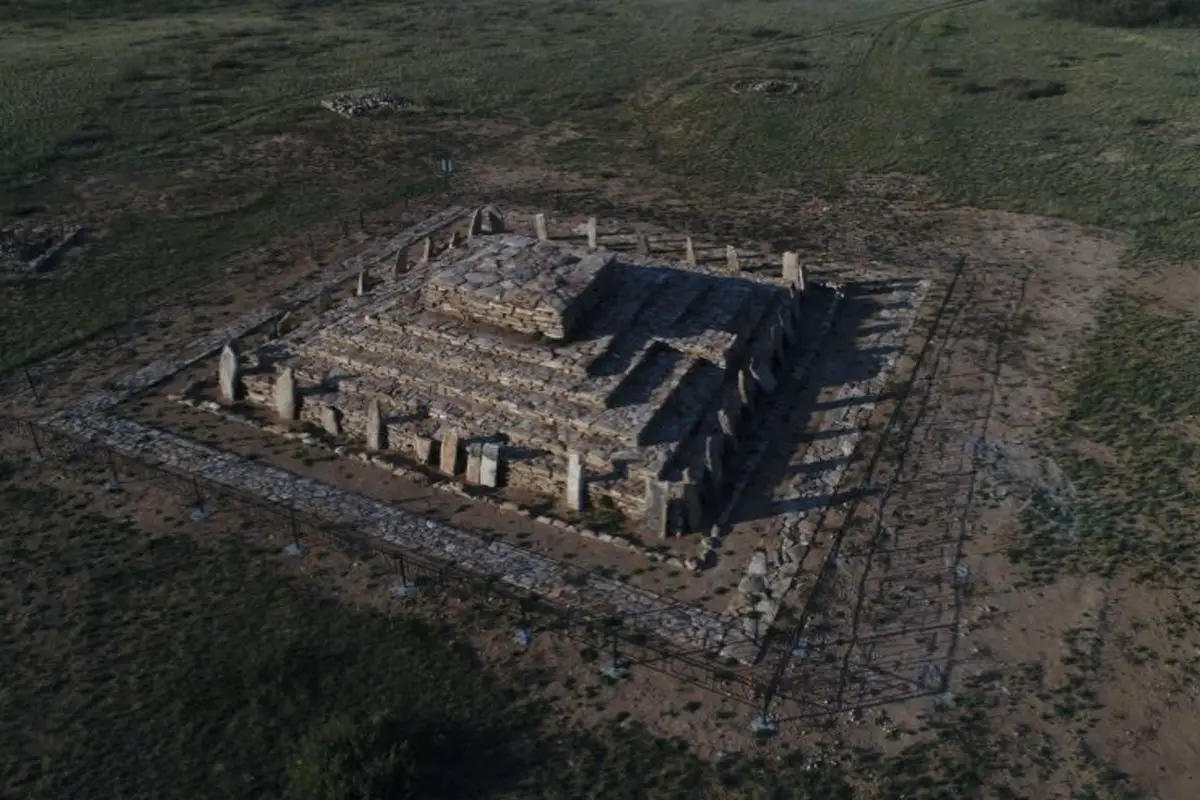Archaeologists have uncovered a pyramid belonging to the Scythian-Saka period in the Karaganda region of Kazakhstan.
The pyramid is located on a hill overlooking the Taldy River in the Shet district of Karaganda, which was excavated by archaeologists from Karaganda University over a period of 4 excavation seasons.
According to the researchers, the pyramid is a mausoleum complex for a ruler from the Begazı Dandibay culture, a late Bronze Age culture that flourished during the last phase of the Andronovo period (2000–1150 BC).
The structure is a pyramidal stepped mausoleum, which was constructed in a region of the Sari Arka steppes where communities buried their rulers and elite. As well as functioning as a mausoleum, the pyramid was also used as a sacred space for religious ceremonies.
A carbon dating analysis of finds found within the structure have indicated a date between the 14th and 12th century BC.
Dr. Aibar Kassenali said, “Looking at the cut stones found in the pyramid, the size of the mausoleum, and the fact that such a huge structure was built in the Bronze Age in a very arid region such as the steppe is an indication of the high understanding of art and rich spiritual beliefs that the Begazi Dandibay communities have reached.”
Excavations in the region have also uncovered a proto-city settlement also belonging to a Begazı Dandibay community. Dr. Çınar said, “This settlement, which extends over an area of 15 hectares, existed chronologically in the same historical period as Troy 4 in Asia Minor, the Early Mycenaean period in mainland Greece, and the advanced period of the Middle Kingdom in Egypt. The settlement has a series of walls, a planned street network, and water collection systems.”
According to the researchers, the Begazı Dandibay communities show that they have close connections with the Karasuk culture of Southern Siberia, which constitutes the Proto-Turkish culture. The corridors leading to the burial chamber, especially in the mausoleums of the Begazı Dandibay phase, always open in the direction of the sunrise, as a manifestation of traditional Turkish religious belief.
Header Image Credit : qha





